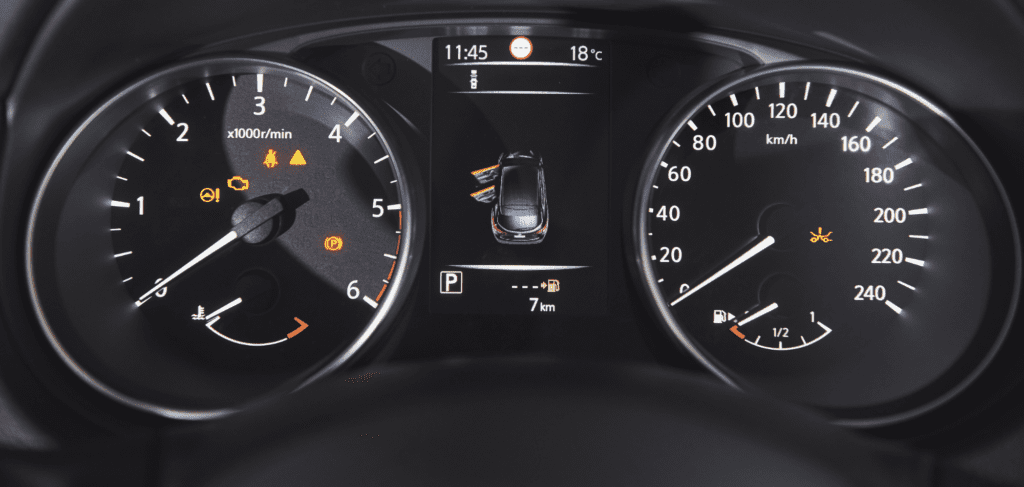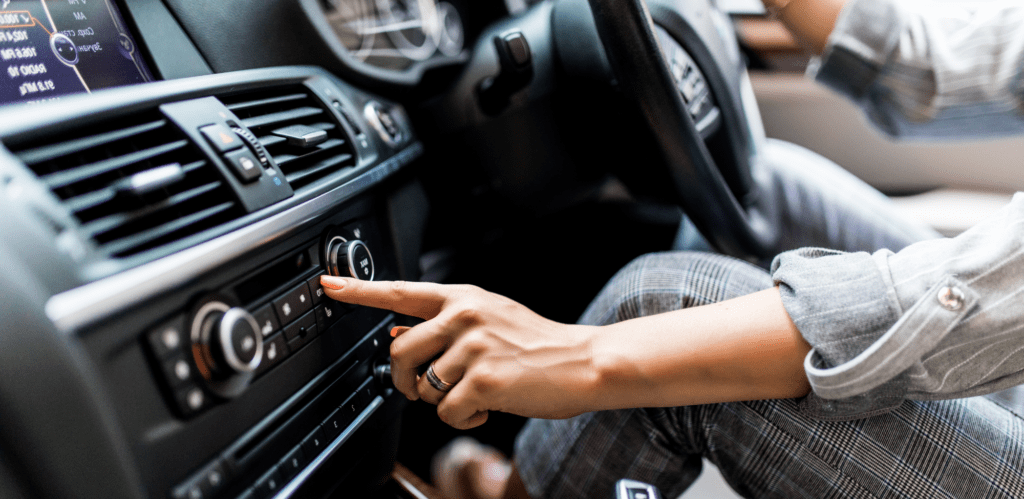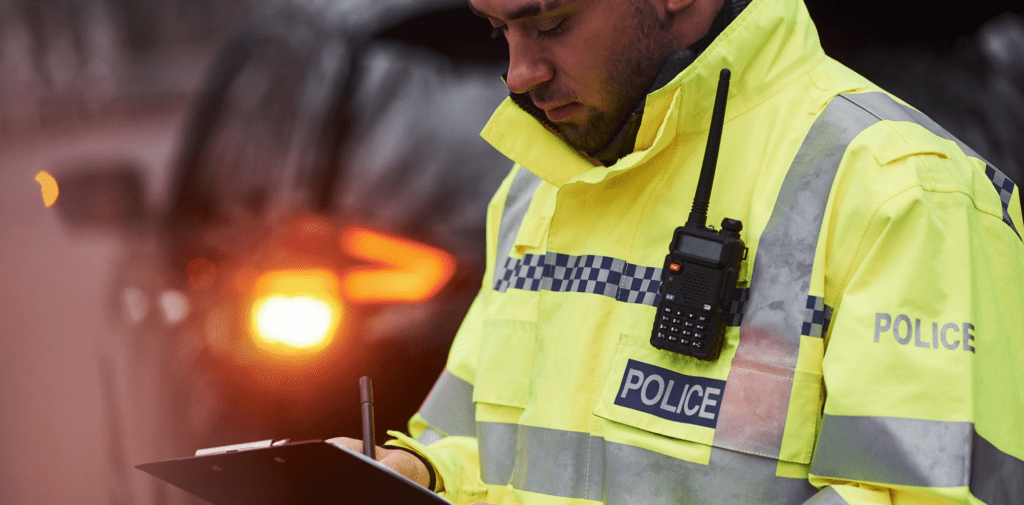
In the tapestry of modern driving, where the roads unfurl beneath the wheels of countless vehicles, there exists a common yet often overlooked phenomenon – unintentional speeding.
It’s a moment that many drivers have experienced: the sudden realisation that the speedometer has crept up, silently overstepping the boundaries of legal speed limits.
This realisation can come as a surprise to those who pride themselves on their diligence and adherence to road laws. Yet, despite best intentions, unintentional speeding remains a prevalent issue.
The causes of this unwelcome surprise are varied, rooted in both the technological aids we rely on and the ever-changing environment of the roads themselves.
This article aims to shed light on five common scenarios where drivers, unbeknownst to them, find themselves breaking the speed limit.
By bringing awareness to these scenarios, drivers can arm themselves with the knowledge and vigilance needed to prevent such slip-ups and foster safer driving habits for all.
In the era of digital navigation, satellite navigation systems, or Sat Navs, have become indispensable tools for drivers navigating the complexities of road networks.
These devices, with their promises of guiding us from point A to point B, have ingrained themselves into the fabric of driving.
However, their utility comes with caveats, particularly concerning the accuracy of the speedometer readings they provide.

A report by USwitch highlighted a startling figure: 17% of Sat Nav users had been given incorrect speed information.
This discrepancy between the speed displayed on the Sat Nav and the actual speed of the vehicle can lead drivers into a false sense of security, believing they are within the speed limit when, in fact, they are speeding.
This issue is compounded by the reliance many drivers place on these devices, often overlooking the traditional, perhaps more accurate, speedometer on their dashboard.
To navigate this digital pitfall, drivers are advised to treat their Sat Navs’ speed readings with a degree of scepticism.
Cross-referencing these digital readings with the car’s own speedometer can offer a more accurate gauge of speed, helping drivers stay within legal limits and avoid the risks associated with unintentional speeding.
The Pitfalls of Relying on Older Cars’ Speedometers
Turning from the digital to the mechanical, the accuracy of a car’s speedometer itself can pose challenges, particularly in older models.
The principle behind a speedometer is straightforward: it measures the speed of the vehicle based on the rotation of its tyres.
However, this measurement is influenced by the condition and size of the tyres themselves. As tyres wear down over time, their diameter decreases, leading to faster rotation at the same speed, which can skew the speedometer reading.

Manufacturers calibrate speedometers to account for such variances, erring on the side of overestimation to prevent drivers from unwittingly speeding.
Nonetheless, this calibration is less precise in older vehicles, particularly those built before the advent of more sophisticated electronic and digital measurement tools in the 1980s. Consequently, drivers of such vehicles may face greater challenges in accurately judging their speed.
For those navigating the roads in vintage cars, awareness of this potential discrepancy is vital. Regular checks and calibrations of the speedometer, coupled with a cautious approach to speed management, can help mitigate the risks associated with this technological quirk.
The Ever-changing Speed Limit Landscape
Navigating the maze of roads, highways, and urban streets presents a dynamic challenge to drivers, especially when it comes to keeping abreast of speed limit changes.
These changes are not just numbers on a sign; they are critical indicators of how fast one should safely travel in response to the surrounding environment.
However, catching every speed limit sign is not always as straightforward as it seems.

The act of driving requires constant attention and multitasking, from monitoring traffic signals to keeping an eye on the road ahead and the rear-view mirror.
Within this whirlwind of activity, it’s surprisingly easy to miss a change in speed limit signs. Whether it’s due to being obscured by foliage, the distraction of a busy road, or simply a moment of inattention, missing these signs can inadvertently lead to speeding.
Awareness of your surroundings can serve as a helpful cue in anticipating potential changes in speed limits.
Approaching a residential area, a school zone, or roadworks usually signals a reduction in speed limit.
Recognising these environmental clues can help drivers adjust their speed even before spotting the actual speed limit sign, thus avoiding unintentional speeding.
Adjustment Challenges: From Highways to Residential Streets
One of the more challenging transitions for drivers is the abrupt change from high-speed to low-speed zones, such as exiting a motorway and entering a residential area.
The difference in speed can feel jarring, and the physical sensation of slowing down can sometimes feel slower than it actually is. This discrepancy can lead drivers to underestimate their speed, risking unintentional speeding.
To combat this, drivers should consciously acknowledge these transitions and allow themselves time to adjust.
Gradually reducing speed well in advance of the speed limit change can aid in this adjustment, making it easier to comply with the new speed limit and ensure safer driving practices.
Perception vs. Reality: Understanding Speed
Your perception of speed is a complex interplay of visual cues, motion, and experience. However, this subjective sense can often lead to misconceptions about how fast you are actually travelling, especially in varying driving conditions.
The Role of Perceptual Skills in Speed Assessment
Many drivers rely on their perceptual skills or a ‘feeling’ of their speed as a gauge. While this can be effective to a certain extent, especially for experienced drivers in familiar conditions, it is far from full proof.
Situations that dramatically alter speed limits or driving conditions lacking in visual information (such as driving at night or in fog) can severely impair your ability to accurately judge speed.

For instance, driving in thick fog not only reduces visibility but also removes many of the visual cues that drivers subconsciously use to gauge speed.
Similarly, after driving at high speeds on a motorway, your perception of speed can become skewed, making you feel as though you’re moving slower than you actually are when you reduce your speed to enter a lower-speed zone.
To ensure accuracy in speed perception, drivers should frequently check their speedometers, particularly when conditions change. This habit helps bridge the gap between perception and reality, keeping drivers within legal speed limits.
The Distraction Dilemma
Distractions come in many forms, from the visual to the cognitive, each with the potential to divert a driver’s attention from the task of driving and, crucially, from monitoring their speed.
Common Distractions Behind the Wheel
Whether it’s an engaging conversation with a passenger, changing the radio station, or the simple act of admiring a scenic view, distractions are a common aspect of driving.

However, they significantly increase the risk of unintentional speeding by pulling focus away from active speed management.
Recognising and managing these distractions is key to maintaining speed awareness. For example, while it’s unrealistic to eliminate conversations in the car, being mindful of engaging in discussions that are emotionally charged or require significant attention can help maintain focus on driving.
Managing Distractions to Maintain Speed Awareness
The first step in managing distractions is recognising them. Once identified, strategies can be implemented to minimise their impact.
Simple measures, such as setting the car’s environment before embarking on a journey or using technology wisely to avoid manual adjustments while driving, can make a significant difference.
Moreover, when distractions are unavoidable, extra vigilance towards speed and surroundings becomes essential.
It’s important for drivers to periodically refocus their attention on their speedometer and the road conditions, ensuring that their speed remains within the legal limits, despite any distractions.
Getting Caught Speeding
If you’ve been caught speeding, the consequences can range from a verbal warning to a court summons, depending on the circumstances.

Initial Procedure
When speeding is detected, either by a police officer or a speed camera, the following outcomes are possible:
- A verbal warning
- An invitation to attend a speed awareness course
- A Fixed Penalty Notice (FPN)
- A summons for court
If a police officer stops you, they will request your driving licence, proof of insurance, and a valid MOT. Failure to present these documents on the spot will require you to produce them at your local police station within 7 days.
Notice of Intended Prosecution (NIP)
Drivers caught speeding will be issued a Notice of Intended Prosecution (NIP). It is your responsibility to respond to this notice and inform the police who was driving at the time of the offence.
Unless eligible for a speed awareness course, you will face either a Fixed Penalty Notice (FPN) or a notification to appear in court.
Fixed Penalty Notice (FPN)
Receiving an FPN allows you the option to plead guilty or not guilty. Accepting the FPN requires paying a £100 fine and the addition of 3 penalty points to your driving licence.
Court Proceedings
Choosing to plead not guilty necessitates a court appearance. Here, if found guilty, you might incur a larger fine and more penalty points, depending on the speed limit and the degree to which you exceeded it.
Conclusion
Unintentional speeding is a multifaceted issue, influenced by technology, the environment, human perception, and distractions.
Understanding these contributing factors is crucial for drivers aiming to adhere to speed limits and maintain safe driving practices.
By remaining vigilant, regularly checking speedometers, and being aware of the common scenarios outlined
Frequently asked questions
If you find yourself exceeding the speed limit, the first step is to gently reduce your speed to the legal limit.
Avoid abrupt braking unless necessary for safety, as this could startle drivers behind you and potentially cause an accident.
Then, assess why you were speeding unintentionally – were you distracted, relying too much on technology, or misjudging your speed? Identifying the cause can help you avoid repeating the mistake in the future.
Improving your speed awareness involves a combination of regular checks of your speedometer, being aware of the surrounding road conditions, and anticipating changes in speed limits based on environmental cues.
Additionally, using technology wisely, such as setting up speed limit alerts on a GPS device or app, can serve as a helpful reminder to stay within speed limits.
Yes, there are several apps designed to assist drivers in maintaining legal speeds. For instance, many satellite navigation systems and driving apps include features that alert you when you’re exceeding the speed limit.
These tools can be invaluable for keeping your speed in check, especially on roads with frequently changing speed limits or when driving in unfamiliar areas.
Cruise control can be a useful tool for maintaining a constant speed, especially on long stretches of motorway.
However, it’s important to use it wisely. Cruise control is most effective in steady traffic conditions and clear weather.
In areas with changing speed limits or in adverse weather conditions, it’s better to control your speed manually to ensure it’s appropriate for the current environment.
The best approach is to anticipate the change well in advance and begin to gradually reduce your speed.
Look out for signage indicating an upcoming speed limit change and use environmental cues, such as the appearance of residential buildings or a school zone, to gauge when to slow down.
This not only helps you comply with the speed limit but also makes the transition smoother for you and safer for other road users.
The penalties for speeding can vary significantly depending on the jurisdiction, the speed over the limit, and any previous offences. Generally, if you’re caught speeding, you may face several potential consequences:
- Fines: Almost all instances of speeding result in a fine, the size of which can increase based on how much you were exceeding the speed limit.
- Points on Your Licence: In many places, speeding results in points being added to your driving licence. Accumulating too many points within a certain period can lead to further penalties, including the potential loss of your licence.
- Speed Awareness Courses: Some jurisdictions offer the option to attend a speed awareness course as an alternative to receiving points on your licence. These courses are designed to educate drivers about the dangers of speeding and encourage safer driving habits.
- Increased Insurance Premiums: Having a speeding violation on your record can increase your insurance premiums, as insurers may view you as a higher-risk driver.
- Licence Suspension or Revocation: For severe offences or if you have multiple speeding violations, you may face a temporary suspension or even permanent revocation of your driving licence.


